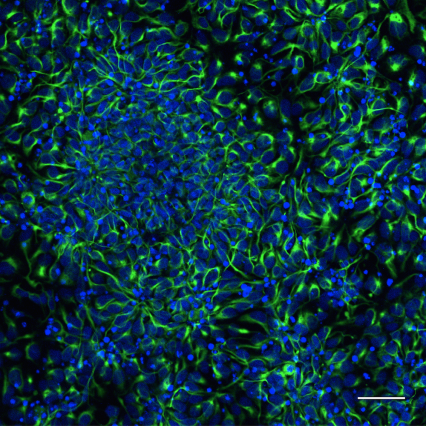Rett Syndrome (RTT) is a devastating neurodevelopmental disorder and the leading known genetic cause of autism in girls. Mutations in the X-linked gene MECP2 (methyl-CpG binding protein 2) account for the vast majority of RTT cases. The neurobiology of MECP2 is fundamental to understanding the mechanisms of RTT and identifying therapeutics for the disorder. In mouse models of Rett Syndrome, our laboratory has discovered synapse- and circuit-specific deficits in maturation and plasticity of cortical neurons that underlie core features of the disorder. The dysfunction arises from a deficit in neuronal signaling molecules that are regulated by MECP2. Stemming from this work, the first mechanism-based treatment for Rett Syndrome progressed through phase 1, 2 and 3 clinical trials and has recently been approved by the FDA as the drug trofinetide. This is also the first mechanism-based treatment for any neurodevelopmental disorder.
MeCP2 is an epigenetic modulator of gene expression that has recently been shown to interact significantly with microRNA machinery. Multiple lines of evidence point to a role for MeCP2 in successive stages of brain development, including prenatal neurogenesis, postnatal development of connections and function, and experience-dependent synaptic plasticity. We hypothesize that the pleiotropic effects of MeCP2 are mediated in prenatal development via a set of early regulated miRNAs that influence neurogenesis; during postnatal development through a different set of miRNAs that regulate Insulin-like growth factor 1 (IGF1) signaling; and in late development into adulthood via a third set of miRNAs that influence synaptic function and plasticity. We are currently employing cutting-edge methodologies including stem cell, 3-D organoid, and in situ analyses of human neurons, alongside behavioral, imaging and electrophysiological approaches in mouse models, to reveal the function of MeCP2 at different developmental stages. An important goal is to discover novel therapeutics that target fundamental mechanisms of MeCP2 function.
